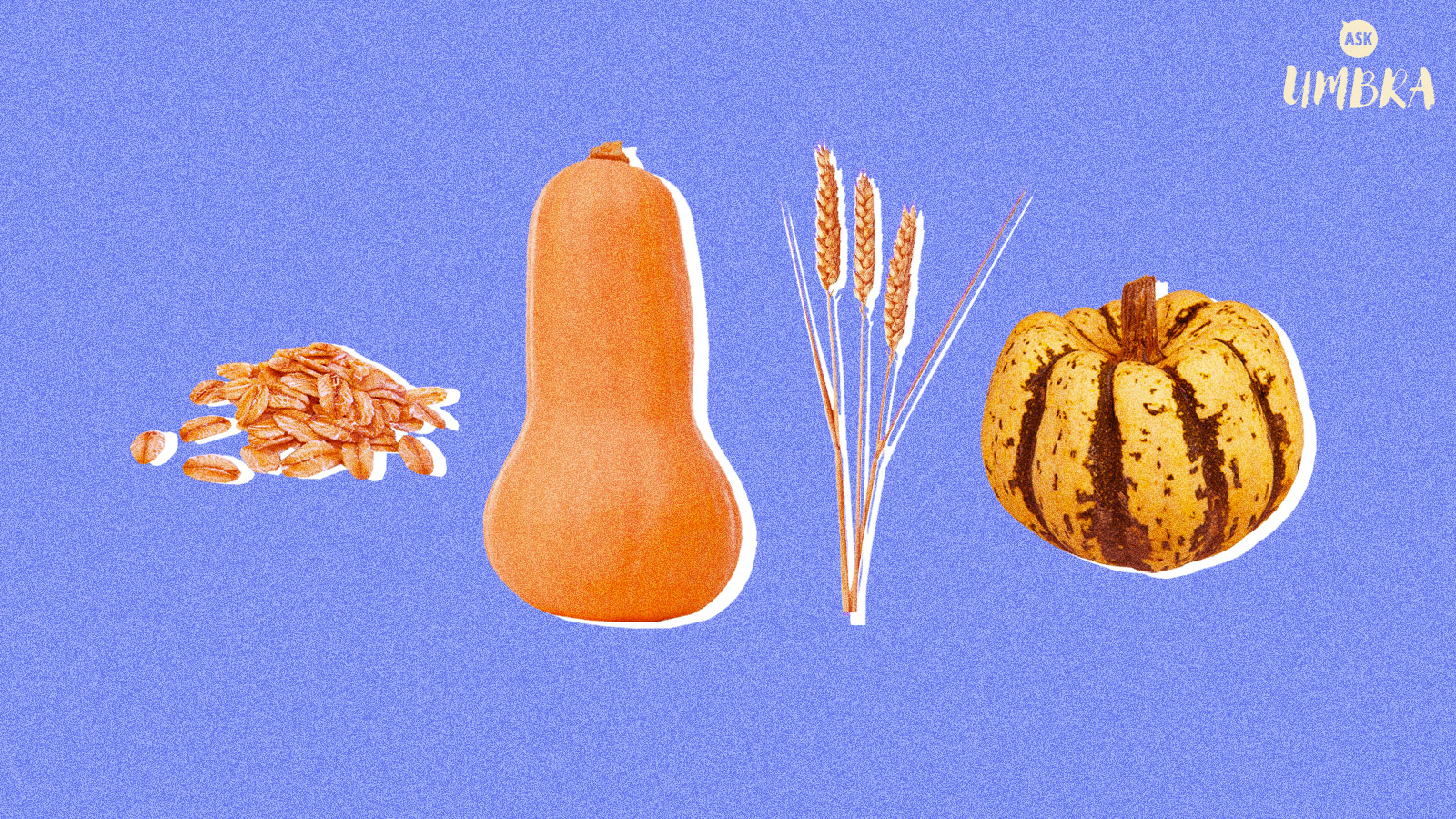Q. Dear Umbra,
I want to know which grains and vegetables are most sustainably grown. Should I eat more oats? Soup with barley? Squash or sweet potatoes?
— Yearning for Ultimate Minimum
A. Dear YUM,
You’ve posed a surprisingly divisive question! Divisive for me, personally. There is the half of me that absolutely loves to look at orderly, quantitative rankings of foods according to carbon footprint and other environmental metrics. And there is the half of me that reads your question and remembers that just about 10 percent of Americans eat the recommended amount of fruits, vegetables, and legumes, which makes me simultaneously irate and miserable. It’s kind of like you are asking me for the very best technique for hurdle racing while everyone around you is lying on the ground, gently rolling around and groaning, wondering whether they should attempt a jog at some point in the coming month.
You are free to get as granular as you like with your decision to eat the most sustainable food possible. Why the hell not! It’s kind of fun, in a neurotic way! I found one study that ranked pretty much every food that you can imagine by its carbon footprint by weight. By that metric, the most carbon-efficient five foods, period, are onion, celery, potatoes, carrots, and zucchini. Oats, rye, barley, corn, and wheat each emit less than half as much carbon by weight as quinoa, and less than a quarter as much as rice. (We’ll come back to rice, which is surprisingly pesky, shortly!)
However, weight is a flawed metric. A pound of plake beans, which is a type of white bean from the Mediterranean, has the same carbon impact as a pound of lemons, but those are very different meals in both size and nutrition — not to mention taste.
Complicating matters further, greenhouse gas intensity is not the only factor in “sustainability.” Let’s talk about water! Tree nuts have a pretty low carbon footprint, but they’re a potentially huge water sink — and the majority of them, particularly here in the U.S., are grown in water-scarce parts of California. Let’s talk about land use! Legumes, which are super-efficient sources of nutrients from a greenhouse gas and water perspective, can require a relatively vast amount of land to grow.
If you want to play around with weighing all these different factors, you can use this interactive data set of different foods’ environmental impact from the World Resources Institute. But what you’ll quickly realize is that while there are certainly differences between the impacts of grains and root vegetables, or beans and leafy greens, they’re nowhere close to the differences between animal products and non-animal products. In other words, if you’re limiting animal products in your diet — especially those produced by ruminants, like cows or sheep — or cutting them out altogether, you’re almost certainly making a much greater difference in the ecological footprint of your diet than you would by picking out the most resource-efficient and lowest-impact of the non-animal products.
There are a few exceptions: Greenhouse-grown lettuces and tomatoes, for example, have carbon impacts on par with poultry, but that varies based on how the greenhouses are powered. (I know! Yet another factor to consider!)
There are also huge environmental and climate differences depending on how a crop is grown, as I’m sure you know. Last year, I worked with my fine video-making colleagues Daniel Penner and Jesse Nichols to design and prepare a “low-carbon” Thanksgiving meal, based on recommendations from the Center for Sustainable Systems at the University of Michigan. Those recommendations described rice as a low-impact food when measured by serving, so we made rice pudding for dessert.
So I was surprised, in the course of answering your question, to discover general uproar about the greenhouse gas emissions of rice production. They’re quite high, relative to other grains, due to methane produced by the standing water in rice paddies. In fact, rice production alone is responsible for an estimated 12 percent of global methane emissions. But methods of growing rice that don’t require flooding the paddies can reduce those emissions by 50 (or as much as 90, if done perfectly) percent. But to further complicate everything, there’s also evidence that those methane-saving methods boost the nitrous oxide (another powerful greenhouse gas) that rice farming produces.
Compared to other food groups — meat, dairy, eggs, poultry — rice still looks quite good! But if I were designing that Thanksgiving menu today, I might amend that dessert recommendation to be, ah, barley pudding. Which, I have to say, sounds less delicious.
Rice aside, all kinds of crops can be grown either with conventional or organic agricultural techniques, each of which have their own greenhouse gas and water footprints. But now there’s also “regenerative agriculture.” That basically means farming with tactics that enrich soil to help it sequester carbon in the air. Great! There are a variety of practices that theoretically yield that result, but not yet a lot of comprehensive data to confirm their effectiveness.
And at most grocery stores, you won’t find any sort of indicator as to which farm your lentils come from, or what practices those farms use. There’s no label for “uses nitrogen fertilizer,” or “alternates with cover crops,” or “this rice brought to you with less flooding!” I mean, most of the time you don’t even know what part of the world your groceries come from! And for all the fretting about “food miles” and eating local, transportation only makes up about 11 percent of a given food’s carbon footprint in the United States. (But try to avoid food flown in on a plane, like winter asparagus from South America.) About 80 percent comes from a food source’s time in the field, or greenhouse, or feedlot.
But again: In the grand scheme of the carbon or water or land impact of your diet, the subtleties in vegetable and grain farming are — may you and God both forgive me for this one — kind of small potatoes! When it comes to lowering dietary emissions, “the big levers that you can pull aren’t sourcing vegetables and grains from a certain farm,” says Richard Waite, an associate with the World Resources Institute’s food program. “It will be eating more vegetables and grains and moving those toward the center of the plate, and less animal proteins.”
Now, YUM: You are so advanced in caring about the climate impact of your diet that you might look at that recommendation and think: “AMATEUR HOUR!!!!” And in response to that, I quote Kris Jenner without a hint of irony: You’re doing amazing, sweetie! But try not to fret too much about trimming down the various ecological footprints of your diet to their leanest possible form. Perhaps it’s time to try a new climate challenge — like, say, getting rid of your car.
Daringly,
Umbra




